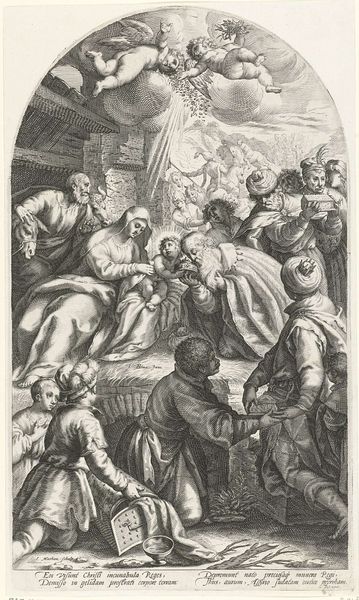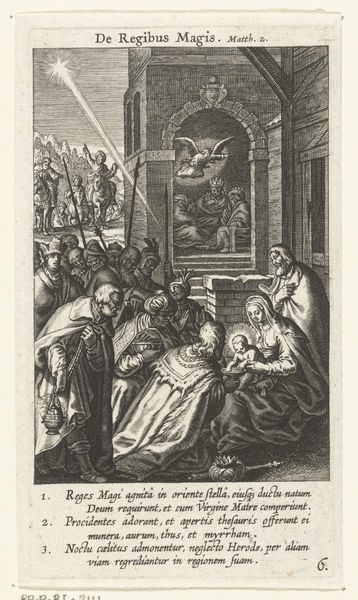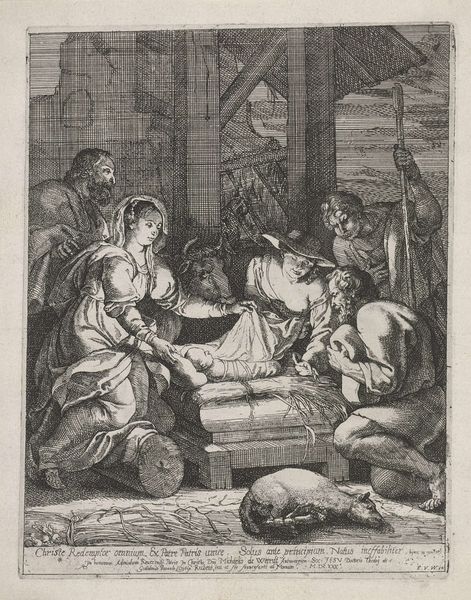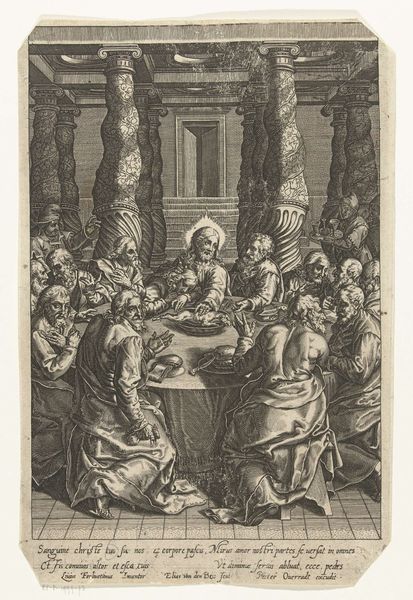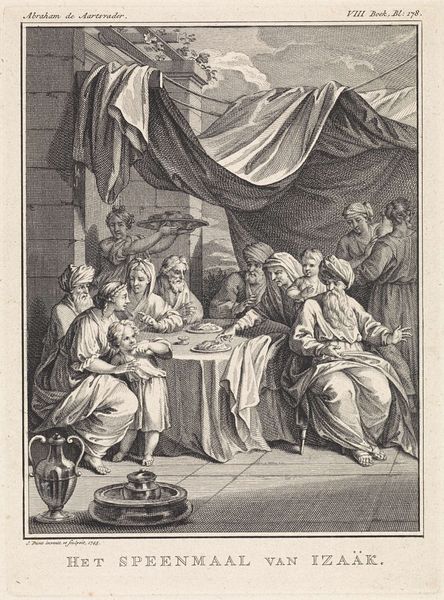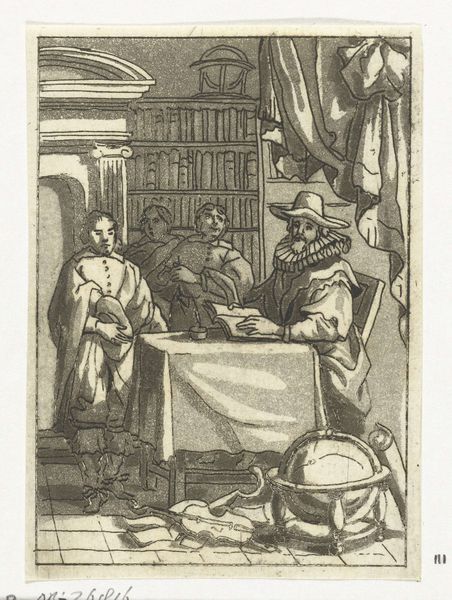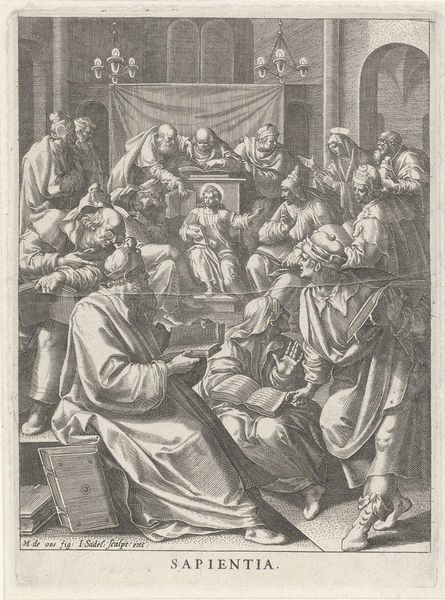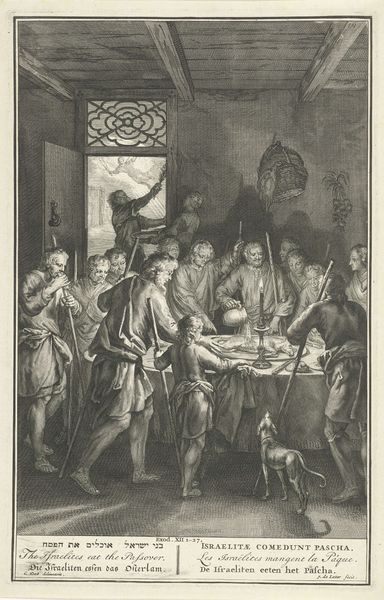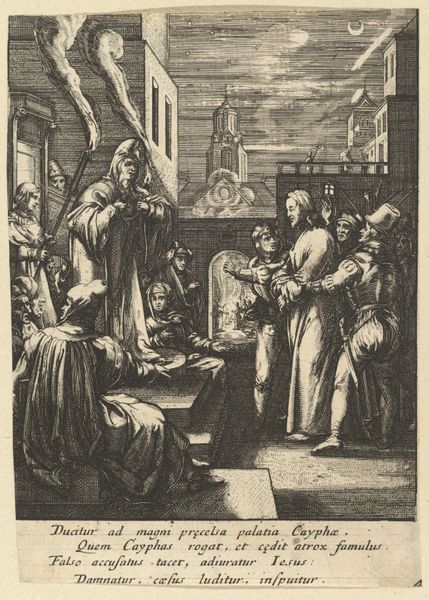
print, intaglio, engraving
#
baroque
# print
#
intaglio
#
history-painting
#
engraving
Dimensions: height 155 mm, width 92 mm
Copyright: Rijks Museum: Open Domain
This is Lodewijk Joseph Fruytiers’ “Adoration of the Holy Sacrament,” a print of unknown date. Fruytiers used a technique called etching to create this print. He would have covered a metal plate with a waxy ground, scratched an image into it with a needle, then bathed the plate in acid. The acid would bite into the metal where the ground had been removed, creating recessed lines. The plate could then be inked and printed onto paper. Although etching is a form of reproductive printmaking – a way of disseminating images quickly and efficiently – there is still a great deal of handwork involved. Each line is carefully drawn, and the depth of the bite must be controlled to achieve the desired effect. Look closely, and you can see the density of labor that went into the details of each figure. The print is not just an image, but also an object that bears witness to its own making. In this regard, it challenges the divide between art and craft, reminding us that even in the age of mechanical reproduction, the human hand remains essential.
Comments
No comments
Be the first to comment and join the conversation on the ultimate creative platform.
